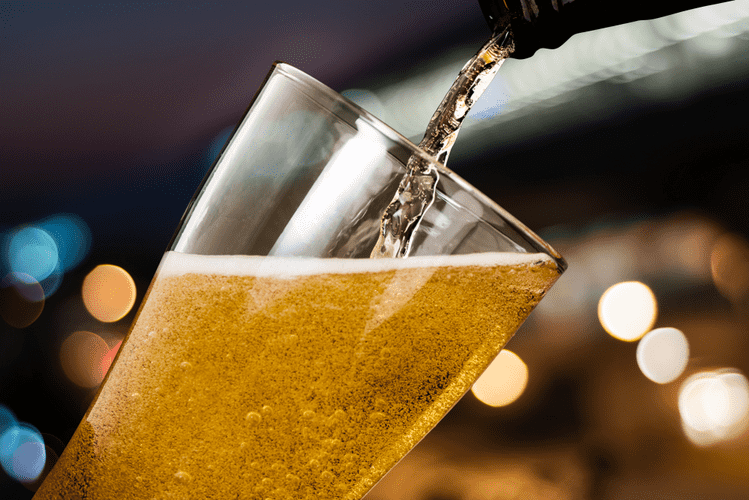How Does Alcohol Affect Dopamine Levels in the Brain?
A large body of evidence indicates that dopamine plays an important role in motivation and reinforcement6 (Wise 1982; Robbins et al. 1989; Di Chiara 1995). These factors include (1) the type of stimuli that activate dopaminergic neurons, (2) the specific brain area(s) affected by dopamine, and (3) the mode of dopaminergic neurotransmission (i.e., whether phasic-synaptic or tonic-nonsynaptic). To modulate the responsiveness of neighboring neurons to glutamate, dopamine modifies the function of ion channels in the membrane of the signal-receiving (i.e., postsynaptic) neuron. The activity of some of these ion channels (i.e., whether they are open or closed) depends on the voltage difference, or potential, between the inside and the outside of the cell membrane adjacent to these channels. Through its effects on G proteins, dopamine indirectly modifies the sensitivity with which voltage-dependent channels respond to changes in the membrane potential that occur when glutamate binds to its receptors, which also act as ion channels (i.e., receptor-operated channels). The neurons then store the dopamine in small compartments (i.e., vesicles) in the terminals of their axons.
WAIT, MODERATE DRINKING DOESN’T HAVE HEALTH BENEFITS?
- Using pharmacologic and genetic approaches, Ikkβ was shown to contribute to excessive alcohol intake in mice [29], and its action is localized to neurons at least in the NAc and CeA [29].
- Finally, the clinical efficacy of these agents is limited [5], possibly due to the heterogeneous nature of the disorder and the complex neurochemical mechanisms underlying alcohol dependence.
- Nevertheless, there are studies that have suggested differences are not solely attributable to familial risk [55,56], and more research is needed to better understand these risk factors.
- Another example of a recent discovery facilitated by novel approaches is that aldehyde dehydrogenase 2 (ALDH2) in cerebellar astrocytes promotes alcohol metabolism, GABA production and ethanol-induced intoxication in mice [11].
- The brain mediates our motivation to repeat behaviors that lead to pleasurable, rewarding states or reduce uncomfortable, distressing physical or emotional states.
- The clinical use of atypical antipyschotics for treatment of alcohol dependence might also be limited by their side effects profile, even though it is substantially improved compared to the typical antipsychotics (for review see [168]).
As previously stated, drinking alcohol increases dopamine levels, and if done frequently, the brain adapts. Only a small quantity of dopamine is released in a healthy functioning brain, and it seldom fills all of the accessible dopamine receptors. Different alleles of the genes in the various pathways are being studied in different population groups across the world. However, what remains to be seen is a definitive consensus on a causative allele of alcoholism. There are conflicting reports in this regard with different population groups having different alleles as risk factors.
Get help with access
- The study was conducted in accordance with the local legislation and institutional requirements.
- Although there exists promising preclinical results, the majority of placebo‐controlled randomized clinical trials with traditional dopamine antagonists and agonists have so far have been discouraging.
- Both acute and chronic alcohol exposure produce molecular and cellular neuroadaptations influencing the activity of discrete brain regions and cell types [3–5].
- To be honest, while drinking increases a person’s dopamine levels at first, excessive and frequent binge drinking might cause the brain to adapt to the dopamine overflow.
- D2 receptors bind with inhibitory G protein and thus reduce the production of AC and resulting cAMP.
- Human and rodent experimental studies show that dopamine receptor antagonists, agonists and partial agonists as well as dopamine stabilizers influencing dopamine transmission, alter alcohol‐mediated behaviours and thus may be potential treatment targets for alcohol dependence.
The FIC specifically facilitates access to attention and working memory resources when a salient event is detected and regulates reactivity to salient stimuli [113, 114]. Our findings support prior work indicating the importance of dopaminergic signaling in salience network FC [101, 115], and supporting a potentially key role alcohol and dopamine for this functional network in AB [116]. The mechanism of action is, however, not completely understood, and although in vitro studies indicate that OSU6162, like aripiprazole, acts as a partial agonist at D2 receptors [191, 192], behavioural studies have failed to demonstrate any intrinsic activity of the compound ([195]).
Professional development
To examine D2/3 dopamine autoreceptor function, the D2/3 dopamine receptor agonist, quinpirole (30 nM), was bath applied for 30 min and was followed by application of the D2-like dopamine receptor antagonist sulpiride (2 µM) for 15 min. To examine differences between tonic and phasic release, we applied stimuli at varying frequencies before and after the application of the β2 subunit-containing nAChR antagonist, dihydro-β-erythroidine hydrobromide (DHβE; 1 µM). Multiple slices per subject https://ecosoberhouse.com/ were sometimes used with no more than two slices per subject/brain region included in any experiment. CFEs were calibrated post hoc against a solution of 1 µM dopamine dissolved in voltammetry ACSF. In closing, brain alterations underlying addiction not only drive the addiction process itself but also make it difficult for many people with AUD to change their drinking behavior, particularly if they are struggling to cope with the considerable discomfort of acute or protracted withdrawal.
The development of compulsive coping behavior depends on dorsolateral striatum dopamine-dependent mechanisms … – Nature.com
The development of compulsive coping behavior depends on dorsolateral striatum dopamine-dependent mechanisms ….
Posted: Thu, 28 Sep 2023 07:00:00 GMT [source]
View All General Business
Gene expression of cholinergic interneuron markers and several nAChR subunits was not changed following chronic alcohol consumption and abstinence (D, E). The kappa-opioid receptor (KOR) and its endogenous ligand dynorphin peptide have been an area of great interest. Reduced dynorphin activity or blockade of KORs in several brain regions including the CeA [88,89], BNST [90,91], and the striatum, reduce alcohol consumption in mice and rats. KORs have also been shown to modulate the acute actions of alcohol [92], negative affect during withdrawal [93], and the sensitivity of this receptor is augmented after chronic alcohol use [73]. Fast-acting and selective KOR antagonists have been developed and evaluated in preclinical models using rats, yielding promising results that suggest therapeutic potential for treating AUD [94]. It is noteworthy that the ACC and FIC––the prefrontal brain regions for which increased FC following P/T depletion mediated AB in this study––are major hubs of the salience network that is involved in conditioning and assigning incentive salience to drugs and drug-related cues [112].

